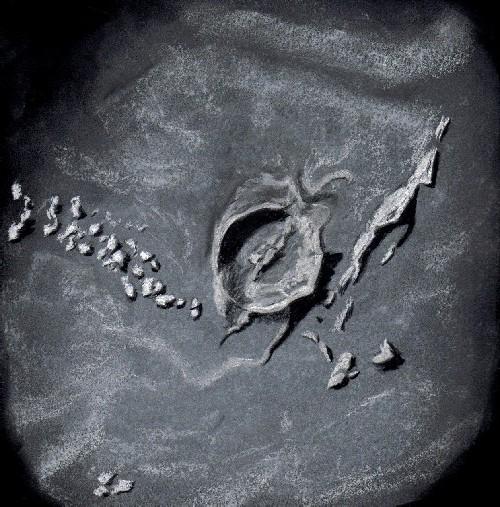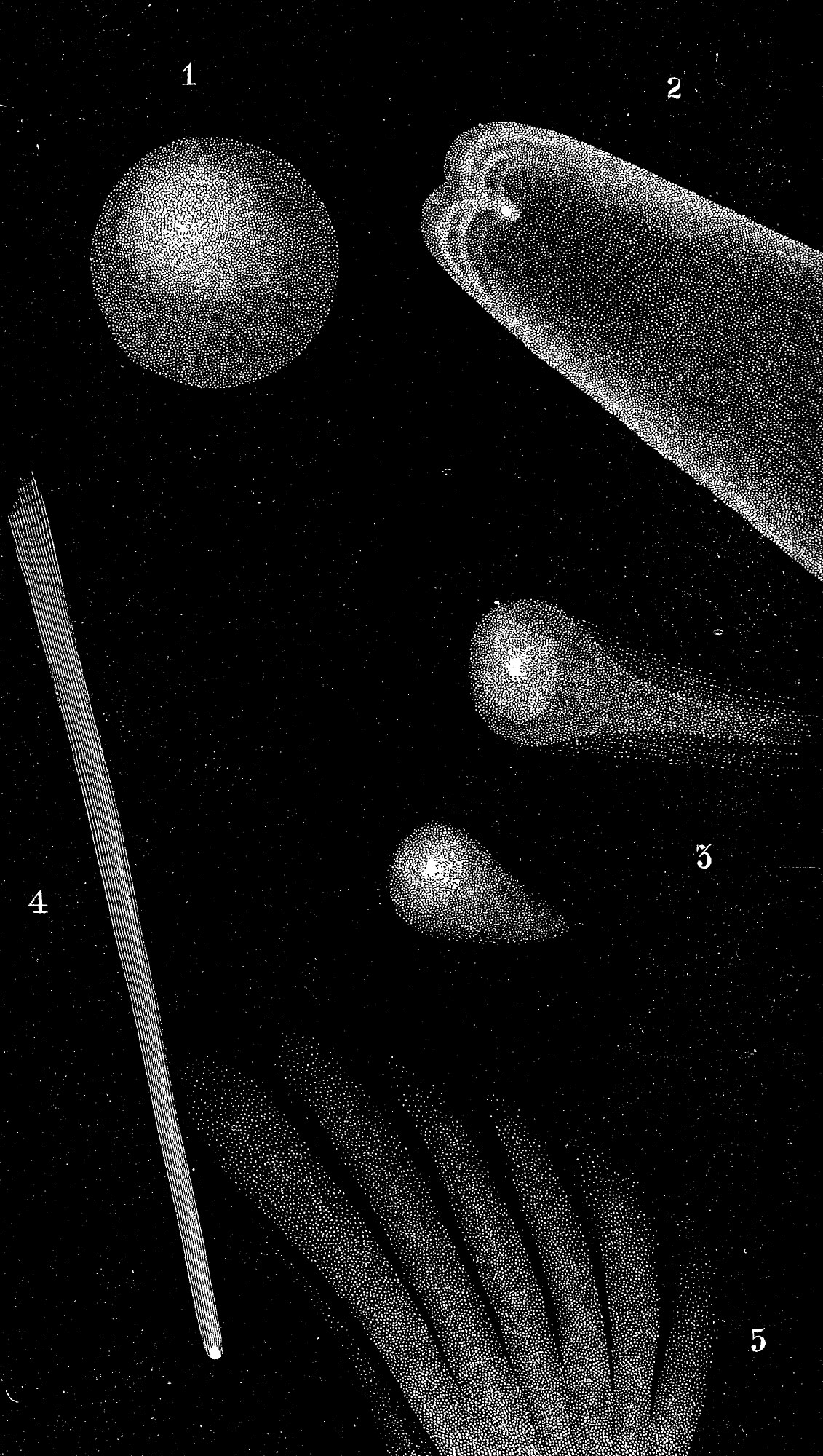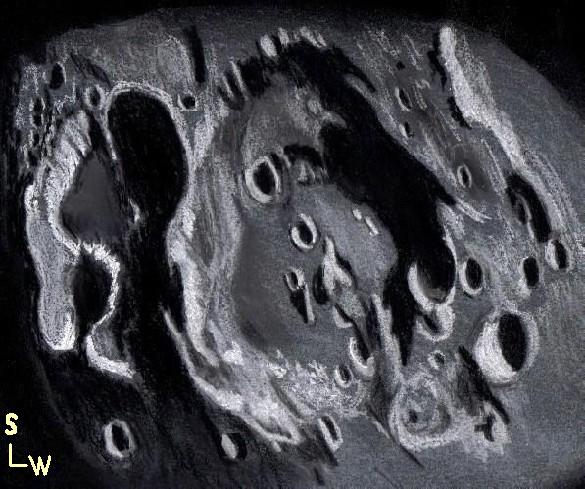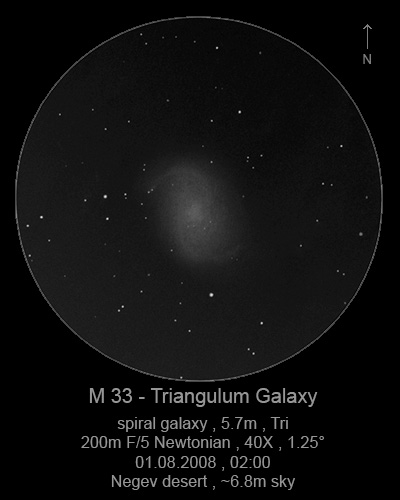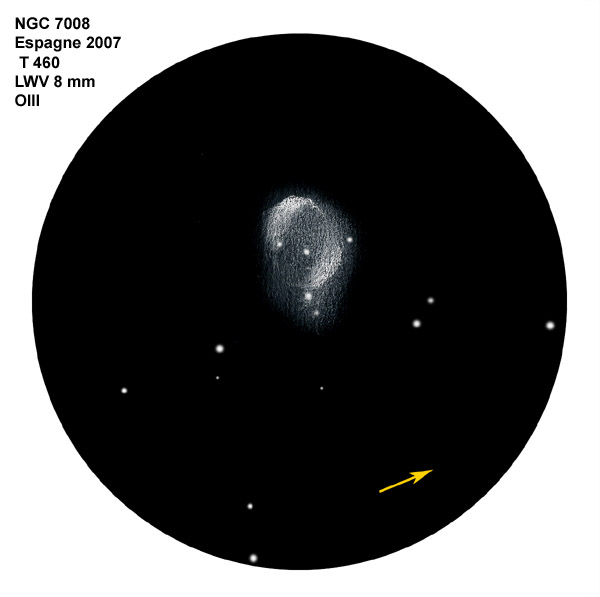M42 Field Sketch
Sketch and Details by Dave Riddle
A few months ago, I submitted a work-in-progress sketch of the Orion Nebula (and thanks again for all the kind comments from the ASOD community!).
I thought it might be of interest to submit one my field drawings used to make the (ahem) “finished” M42 portrait. This raw rendering has hastily scribbled notes around the border concerning aperture, magnification and weather conditions. I don’t see many rough draft drawings submitted to ASOD — you know, the ones with the ink smudged and the paper wrinkled by dew accompanied by bleary eyed late-night written notes that defy comprehension the next morning.
This composite drawing was made almost seven months apart from Panacea, Florida (with my 18″ reflector) and the Woodruff Boy Scout Camp outside of Blue Ridge, Georgia with the Atlanta Astronomy Club’s 24″ reflector. A series of drawings were made over two Orion “seasons” in an attempt to get a final, presentable drawing. And I feel I have a long way to go in knowing the remarkable nebula of Orion.
Dave Riddle



